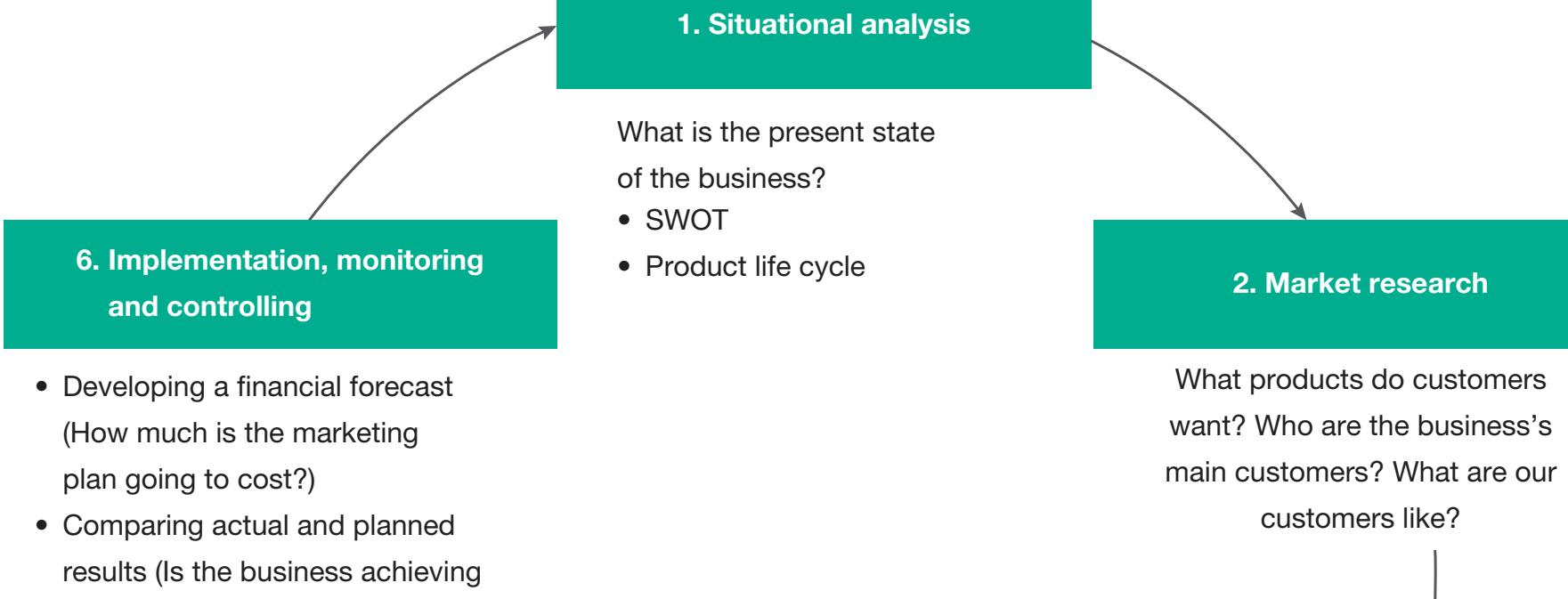Photo AI
Last Updated Sep 24, 2025
Problem vs Decision-Making Simplified Revision Notes for NSC Business Studies
Revision notes with simplified explanations to understand Problem vs Decision-Making quickly and effectively.
222+ students studying
Problem vs Decision-Making
Introduction
In contemporary business environments, developing expertise in problem-solving and decision-making is essential for achieving success. Research indicates that organisations adept in these areas tend to perform better, highlighting their significance.
Definitions
-
Problem-Solving:
- Definition: The process of identifying, analysing, and systematically resolving complex business issues.
- Example: "Analysing and devising strategies to address declining sales through targeted interventions."
- Note: Complex challenges necessitate a thorough and iterative evaluation process.
-
Decision-Making:
- Definition: Choosing the most advantageous action from among a range of alternatives within established parameters.
- Example: "Selecting the most suitable marketing strategy for immediate business expansion."
- Note: Vital for prompt and effective business operations.
Comparative Analysis
Understanding both processes is crucial. Below is a comparison:
-
Problem-Solving:
- Concentrates on uncovering root causes and developing solutions.
- Example Tool: SWOT analysis.
-
Decision-Making:
- Centres on evaluating various options and their outcomes.
- Example Tool: Decision Matrix.

Overlaps and Intersections
Highlight: Decision-making often culminates the problem-solving cycle by choosing the most effective solution.
Example Scenario:
- Problem Identification: Recognise a product line that is not performing well.
- Solution Generation: Develop innovative approaches.
- Decision-Making: Select and implement the most promising innovation strategy.
The benefits of overlap include enhanced decision quality and more inventive solutions. Challenges may involve extended timelines or complex coordination efforts.
Roles in Business
-
Problem-Solving:
- Drives innovation and addresses challenges.
- Tasks include data analysis and brainstorming.
-
Decision-Making:
- Guides timely and precise business actions.
- Emphasises logical reasoning and evaluation of choices.
Research Skills for Problem-Solving
Research skills are indispensable in practical business problem-solving.
- Developing expertise in gathering, evaluating, and synthesising information provides a strategic edge in resolving issues.
- Applied to assess market readiness and make informed decisions.
Information Gathering Strategies
Literature Review
- Entails an exhaustive review of literature to identify gaps and enhance existing knowledge.
Brainstorming
- Utilises techniques like mind mapping and free writing to stimulate creative solutions.
- Mind Mapping: Ideal for project planning, facilitating the visual organisation of ideas.
Collaborative Efforts
- Effective teamwork involves:
- Sharing varied perspectives and knowledge.
- Allocating roles and responsibilities for accountability.
- Regular updates and meetings to track progress.

Evaluating Sources
Source Credibility Criteria
- Key attributes include Reliability, Accuracy, and Validity.
- Employ cross-referencing to confirm data credibility.
Source Evaluation Checklist:
- Author Qualifications: Verify credibility through expert authorship.
- Current Information: Ensure the content is up-to-date.
- Consistency and Support: Compare with other reputable sources.
Databases and Analytics Tools
- Tools like Tableau are utilised for analysing consumer behaviour data.

The Problem-Solving Cycle
Identification of the Problem
- Objective: Establish tools and methods to diagnose issues.
- Key Concepts: SWOT Analysis, Root Cause Analysis, and Five Whys.
SWOT Analysis
- A strategic tool used to evaluate internal and external factors, helping to identify opportunities and challenges.
Diagram: 
Root Cause Analysis
- A method for identifying the underlying causes of problems.
- Uses techniques such as "Five Whys" to delve into core issues.
- Differentiate between 'background issues' and 'core issues' to effectively address the source of problems.
- Practical example: Apply "Five Whys" to identify the reason for a recurring school project delay.
Diagram: 
Definition of the Problem
- Objective: Clearly and concisely define the problem.
- Key Concepts: Scope definition, problem statements.
Example
- Use a flowchart to visually outline and define the problem, simplifying complex relationships.
Diagram: 
Formulation of Strategy
- Objective: Develop creative and consensus-driven strategies.
- Key Concepts: SCAMPER, Delphi Technique, Brainstorming.
SCAMPER
- A method for generating innovative ideas and solutions, fostering creative thinking and problem-solving.
- Encourages exploring problems from various angles, resulting in inventive solutions.
Diagram: 
Delphi Technique
- Involves engaging experts in multiple rounds to refine and agree on solutions.
Brainstorming
- Involves generating numerous ideas from a diverse group without immediate critique.
Implementation of Strategy
- Detailed steps to execute chosen strategies with an emphasis on planning and resource allocation.
Planning
- Develop a comprehensive plan outlining necessary steps to achieve strategic goals.
Success Tip
- Structured planning and clear execution paths are fundamental to successful strategy implementation.
Diagram: 
Execution
- Careful execution of strategies to ensure desired outcomes.
Monitoring and Evaluation
- Objective: Ensure effective monitoring and evaluation processes
Key Performance Indicators (KPIs)
- Metrics that provide insight into a strategy's alignment with objectives.
Example Application
- Develop effective KPIs using real-world examples that offer actionable insights.
Diagram: 
Force-Field Analysis
- An analytical tool used to identify factors that may facilitate or impede a strategy's success.
Diagram: 
Feedback and Improvement
- Objective: Leverage feedback for improvement.
Feedback Loops
- Established mechanisms for regular gathering feedback to support ongoing enhancements.
Improvement Tip
- Iterative incorporation of feedback is crucial for continuous process improvement.
Diagram: 
Continuous Improvement
- Focus on implementing iterative, informed enhancements to strategies based on feedback.
Practical Scenarios
Real and Hypothetical Case Studies
Case Study: Declining Sales Scenario
- Problem Identification:
- Sales data reflects a decline.
- Solutions Explored:
- Conducted market research to understand customer preferences.
- Modified products based on insights gained.
- Enhanced marketing strategies to extend reach.
Consider this: What alternative strategy could you propose?
Case Study: Marketing Strategy Decision
- Scenario: Hypothetical choice concerning a marketing approach.
- Decision-Making Process:
- Evaluation of Alternatives:
- Assessed costs, audience reach, and demographic engagement.
- Decision Criteria:
- Cost-effectiveness and interaction outcomes.
- Roles:
- Collaboration between Marketing Director and Financial Analyst.
- Outcomes:
- Enhanced brand visibility and profit margins.
- Evaluation of Alternatives:
SWOT analysis is integral to strategic decisions. How does this tool affect strategy outcomes?
Simulated Scenario: New Product Launch
- SWOT Analysis:
- Evaluated internal strengths, weaknesses, opportunities, and threats.
- Strategy Formulation:
- Developed strategic marketing plans.
- Implementation Methods:
- Executed a pilot launch followed by targeted advertising.
Consider: How might strategy success transform the business landscape?
Diagrams and Flowcharts
- Utilise steps in diagrams to observe decision-making processes.
- Reflect: "If a different route was chosen, what might the outcome be?"

Worked Examples
Step-by-step Problem-Solving Guide
-
Problem Identification: Clearly define what the problem is
- Example: A retail store is experiencing a 25% drop in customer visits over three months
- Tool: Use SWOT analysis to understand internal/external factors
-
Solution Exploration: Generate potential solutions
- List all possible approaches (improve store layout, enhance product range, revise pricing)
- Tool: Use brainstorming techniques and consult different stakeholders
-
Decision-Making: Select the best solution based on evidence
- Evaluate each option against criteria (cost, feasibility, expected impact)
- Tool: Create a simple decision matrix scoring each solution (1-5) on key criteria
-
Implementation Plan: Create a clear action plan
- Timeline: Week 1 - Store layout changes, Week 2 - Staff training, Week 3 - Promotion
- Responsibilities: Assign specific tasks to team members
- Resources: Budget £5,000 for implementation
-
Monitoring Results: Track effectiveness
- KPI: Customer visit counts (daily), sales conversion rate (weekly)
- Review point: Comprehensive evaluation after one month
Always consider potential alternative solutions and their implications in a practical scenario.
Summary
Comprehending the distinct yet complementary roles of problem-solving and decision-making is essential for effective business strategy. Mastery of these skills enhances leadership and drives business success. Engage with real-world scenarios and case studies to develop and perfect these competencies.
500K+ Students Use These Powerful Tools to Master Problem vs Decision-Making For their NSC Exams.
Enhance your understanding with flashcards, quizzes, and exams—designed to help you grasp key concepts, reinforce learning, and master any topic with confidence!
10 flashcards
Flashcards on Problem vs Decision-Making
Revise key concepts with interactive flashcards.
Try Business Studies Flashcards5 quizzes
Quizzes on Problem vs Decision-Making
Test your knowledge with fun and engaging quizzes.
Try Business Studies Quizzes2 questions
Exam questions on Problem vs Decision-Making
Boost your confidence with real exam questions.
Try Business Studies Questions2 exams created
Exam Builder on Problem vs Decision-Making
Create custom exams across topics for better practice!
Try Business Studies exam builder54 papers
Past Papers on Problem vs Decision-Making
Practice past papers to reinforce exam experience.
Try Business Studies Past PapersOther Revision Notes related to Problem vs Decision-Making you should explore
Discover More Revision Notes Related to Problem vs Decision-Making to Deepen Your Understanding and Improve Your Mastery
Load more notes